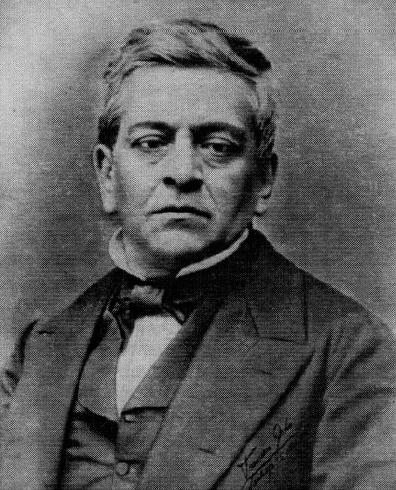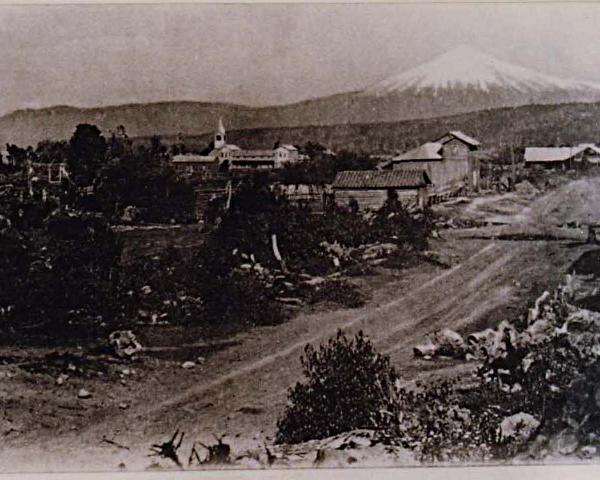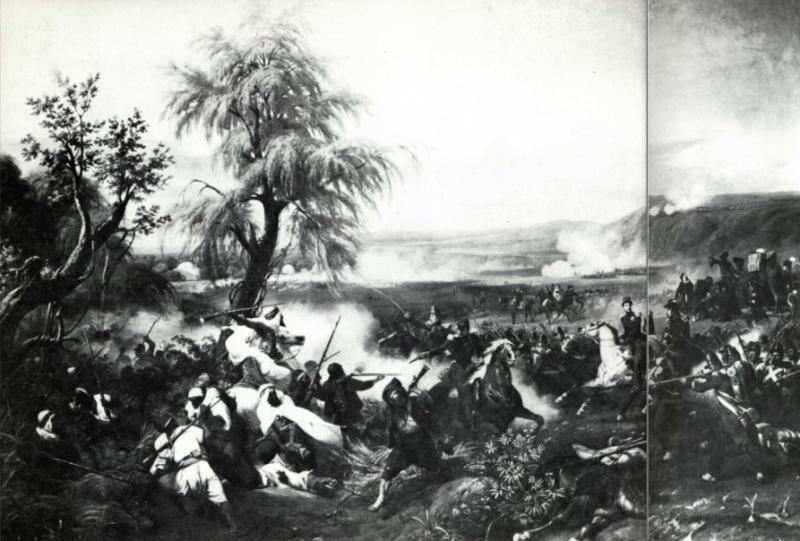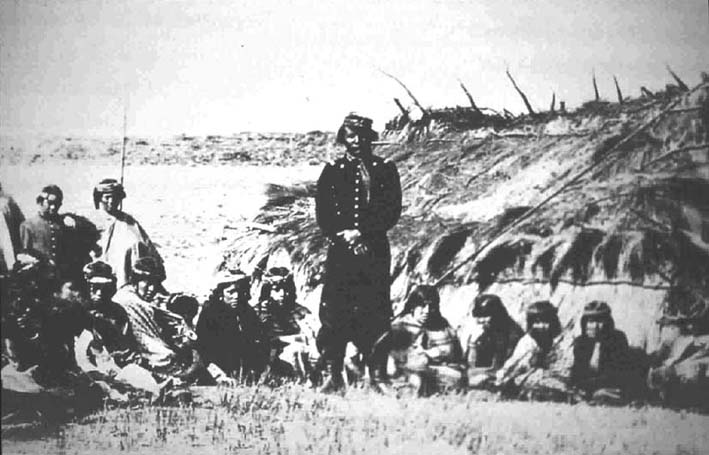Sarmiento spent many years travelling outside Argentina. He spent many years in exile in Chile, Paraguay, the new French colony of Algeria, which he visited in 1847, the United States, where he travelled in 1848 and spent two years as Argentine ambassador in Washington. The governments of all these countries were passionate promoters of white immigration and settlement, a cause that Sarmiento made his own. In all these cases, finding land for white settlers involved displacing and effectively slaughtering the indigenous people who lived there.
The Chilean influence
It was in this period that countries like Chile and Argentina developed the racist white settler culture that has survived to this day, putting them in the same category as Australia and South Africa, where the settlers sought to downgrade and eliminate the indigenous inhabitants.
Sarmiento’s experience in Chile bears some of the blame for Sarmiento’s racist views. He was there in exile for five years in the 1830s, and again after 1841. He became a friend of Manuel Montt, an arch-conservative minister of the interior and foreign minister, and later President (1851-1861), who shared Sarmiento’s enthusiasm for white settlement.

Montt himself was the protégé of the arch-reactionary Diego Portales, and he founded his own conservative political dynasty with his son and grandson reaching the presidency.
The authoritarian legacy of Portales and Montt dominated Chile throughout the 19th century, and was indeed revived by General Pinochet, who perceived himself as the reincarnation of Portales.
Montt himself was the son of Catalan immigrants, and he had already begun to encourage the spasmodic colonisation of Araucanian lands south of the Bio Bio with German settlers in the 1840s. When he became President in 1851 he embarked on a more formal programme, appointing Vicente Pérez Rosales, an adventurer friend of Sarmiento, to organise further German settlement in the lands around Llanquihue. Pérez was later sent to be the Chilean consul in Hamburg to encourage would-be settlers, many of them anxious to move after the European upheavals of 1848. The colonisation project was soon to provoke a lengthy twenty year war against the Mapuche Indians throughout the 1860s and 1870s, in parallel with a similar war in Argentina.

Novelist in Chile and Note taker in Africa – an ideological journey
Sarmiento wrote his major work, Facundo, while in Chile, and in it he describes his views on the desirable modernity of white settlement and the hateful archaic conditions of the natives.
When Facundo was finished, Sarmiento was sent off to Europe by Manuel Montt with three specific tasks: to examine the prospects for fresh immigration from the German states; to report on the state of education in France; and to look at the new French colony of Algeria – to discover more about the position of the French immigrants, and about the fight against the Arabs. He arrived in Europe in 1846.
The French conquest of Algeria had begun in 1830 and encountered a formidable resistance. The policy of refoulement, the continuous driving-back of the Arabs and Berbers – over the mountains and on towards the desert – would continue until the 20th century. Thousands of settlers and soldiers were killed, while the deaths of the natives, possibly a million, went uncounted. One modern historian has described how ‘North Africa was for some time a charnel house of massacred natives.’
Sarmiento was impressed by what he saw, as he travelled through the recently-occupied country in 1846, and he listened with attention to the arguments of the senior French general, Marshal Robert Bugeaud, then engaged in pursuing the Arabs into the Sahara. Bugeaud had his own novel ideas for dealing with the indigenous threat. The “razzia” that he devised in Algeria was a tactic of swift and brutal raids against rebellious tribes, a fore-runner of the counter-insurgency campaigns of the 20th century. Sarmiento took it all in, and learnt what had to be done, and he would of course learn more when he visited the United States. When President, he sent Argentine officers there to study methods of dealing with the Indians.
Sarmiento became a great admirer of Marshal Bugeaud, who had outlined his plans for settlement when he had first become Governor-General in 1841: “We will build villages; and when we can tell our countrymen and neighbours that we have to offer establishments ready-built, in healthy spots, surrounded by fertile fields, and effectively protected against sudden attacks from the enemy, be sure that colonists will come to fill them.”

From Oran, Sarmiento wrote to a friend to tell him of the marvels of immigration: “A thousand Prussians have come ashore in Africa in recent days, receiving from the government the lands they had hoped to acquire in North America...” Sarmiento was quite surprised to find a well-established Spanish bureaucratic class: “Twenty thousand Spaniards have established themselves in Oran or Algiers, making Algeria look more like a Spanish than a French colony...”
“A hundred thousand Europeans have assembled here in Africa,” he went on, “in spite of the ravages of fever that kill one in three... and they have a plan to attract two million in the next six years...”
Bringing it Back Home
Might not Latin America do as well, Sarmiento thought? “Why cannot the Atlantic current that sweeps these people from Europe to North America divert itself towards the South” and establish settlements from the Rio de la Plata to the Andes? Sarmiento dreamed of bringing European civilisation “to the unknown Saharas hidden in the Americas.”
This was Sarmiento’s vision, yet he was well aware that this would involve the destruction of the indigenous peoples. He already understood what was happening in Algeria: “Among the Europeans and Arabs in Africa, there is not now, nor will there ever be, any amalgamation or assimilation possible; one of the two peoples will have to disappear, retire, or dissolve; and I love civilisation too much not to desire from now on the definitive triumph in Africa of civilised peoples.”
When Sarmiento eventually returned to Chile and then to his own country, he “grew increasingly frank about the need to exterminate Argentina’s indigenous population.”
His later writings took a wholly un-ambivalent view. In the middle of the campaign of the “Conquest of the Desert” in the 1880s, he wrote that “the occupation of such an extensive region must present many difficulties, but none of them compare with the advantages to be gained from the extinction of the savage tribes.”

Lesson for the Future
Noam Chomsky, the radical linguistics Professor at the prestigious Massachussets Institute of Technology (MIT) recently discussed the successful efforts at his own university, to revive the Wampanoag language, one of the “disappeared” indigenous languages of the United States:
“A language is more than just sounds and words,” Chomsky said. “It is the repository of culture, history, traditions, the entire rich texture of human life and society. Loss of a language is a serious blow not only to the community itself but to all of those who hope to understand something of the nature of human beings, their capacities and achievements, and of course a loss of particular severity to those concerned with the variety and uniformity of human languages, a core component of human higher mental faculties.”
“Similar achievements can be carried forward,” Chomsky suggested, hoping for the revival of indigenous languages – and maybe his words should be listened to in the universities of Argentina. It would be, he said, “a very partial but significant gesture towards repentance for heinous sins on which our wealth and power rests.”
















